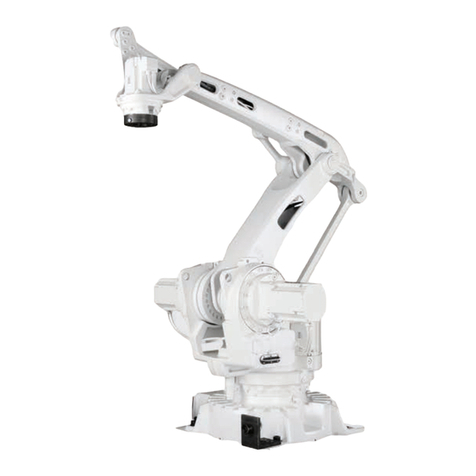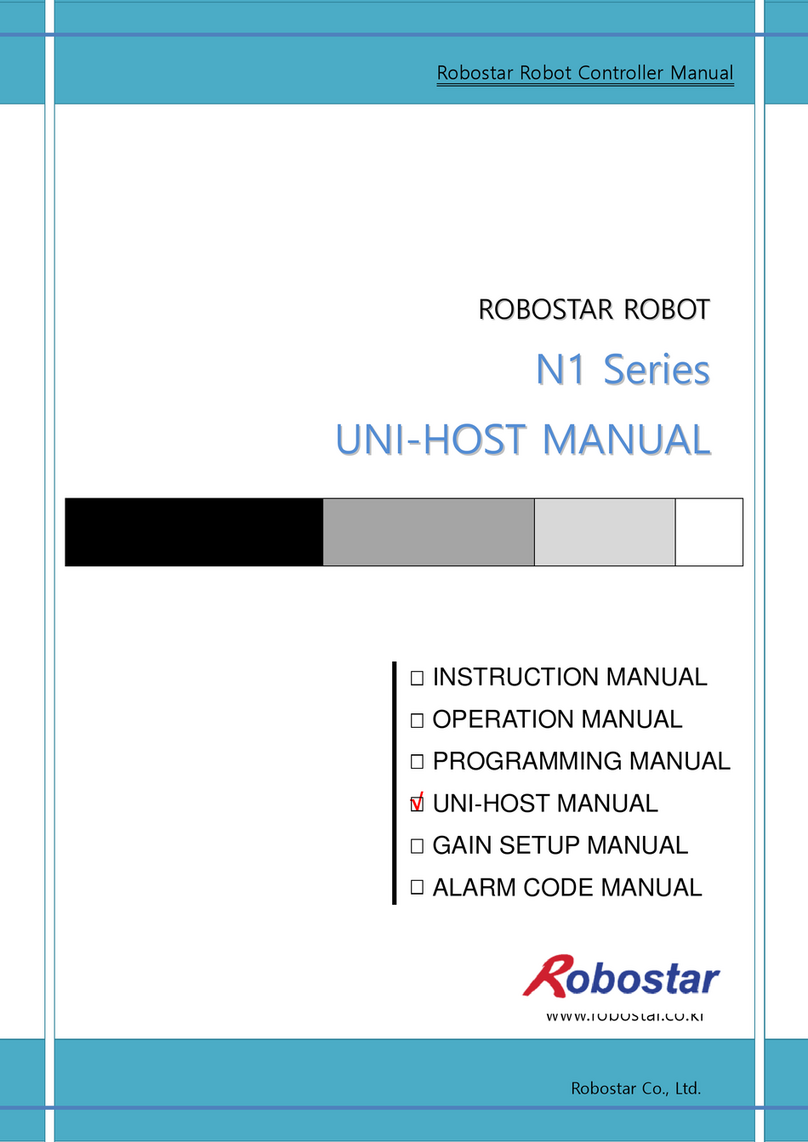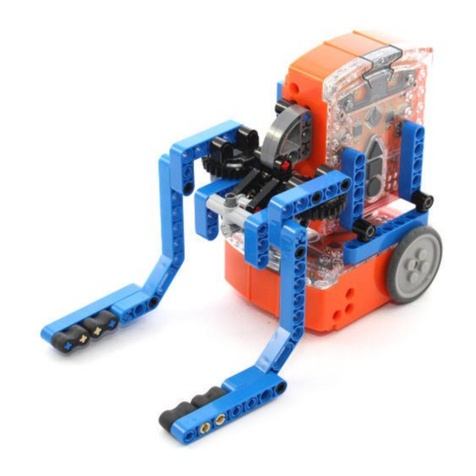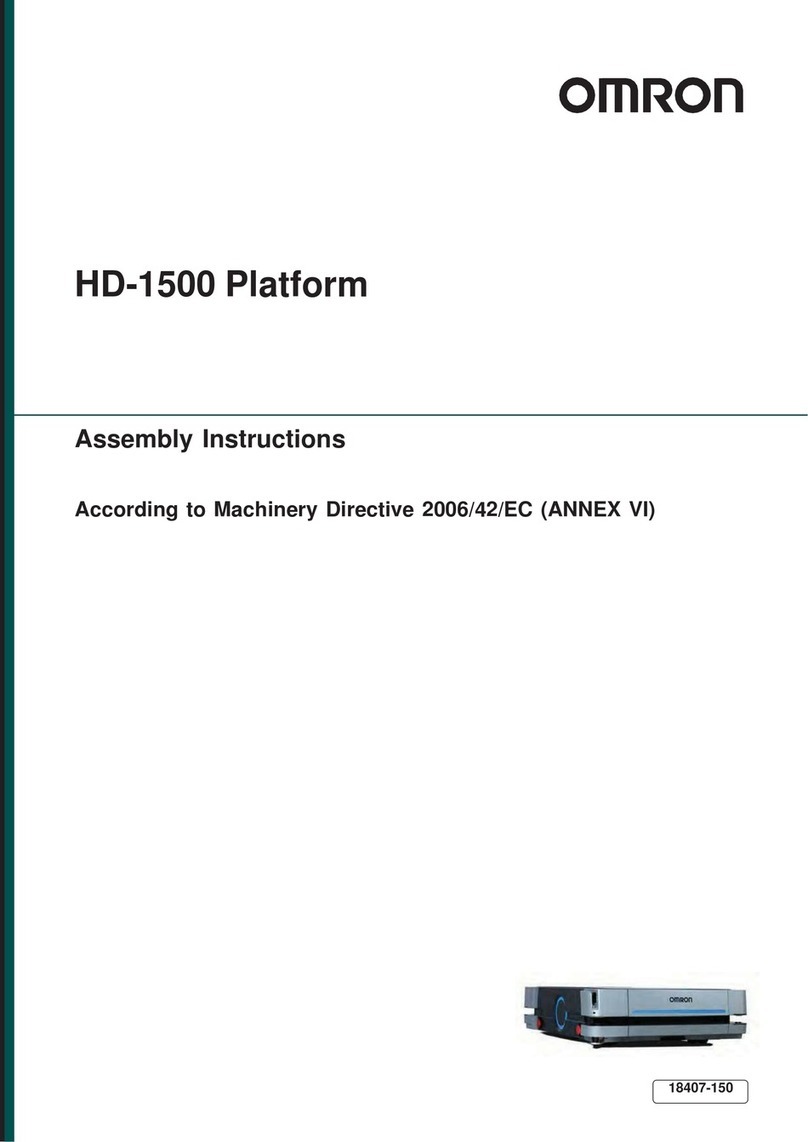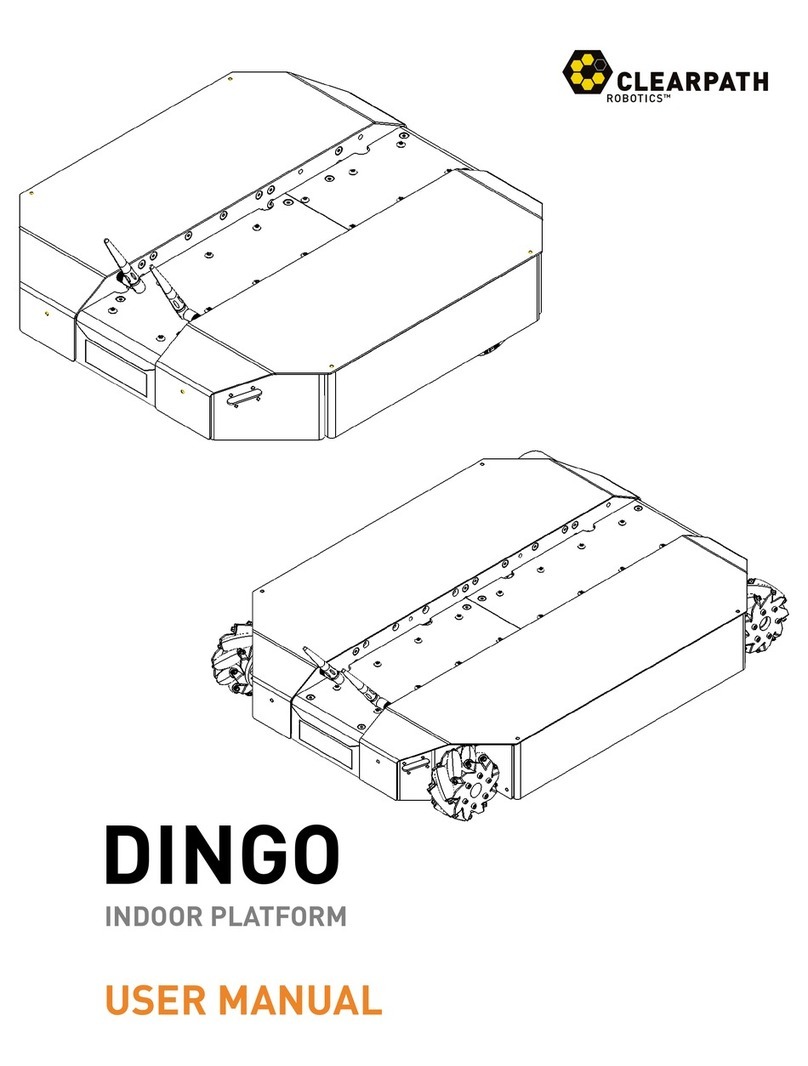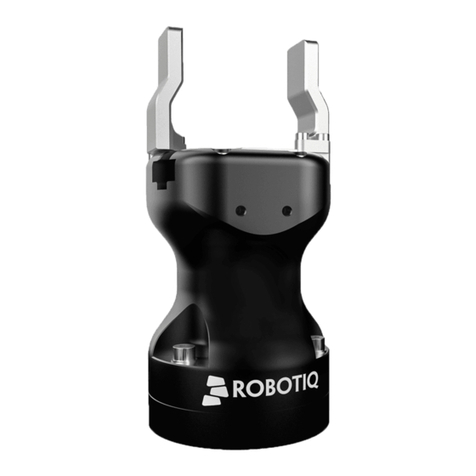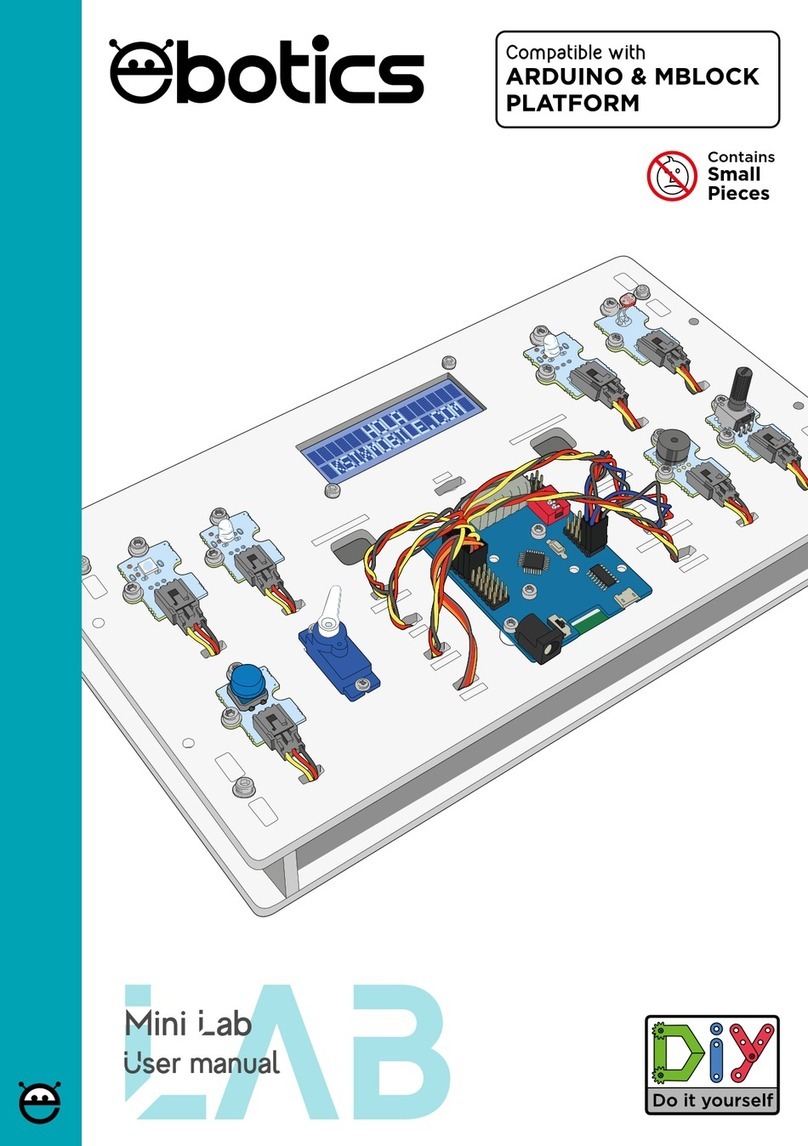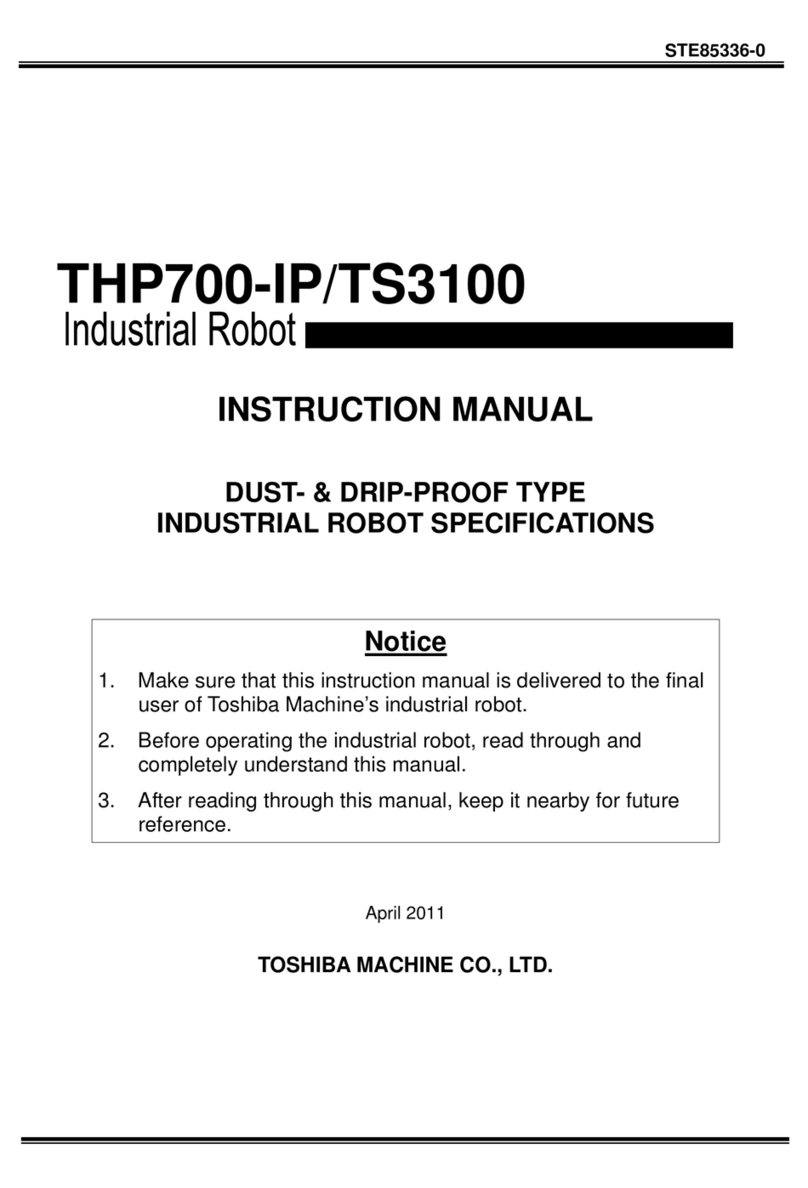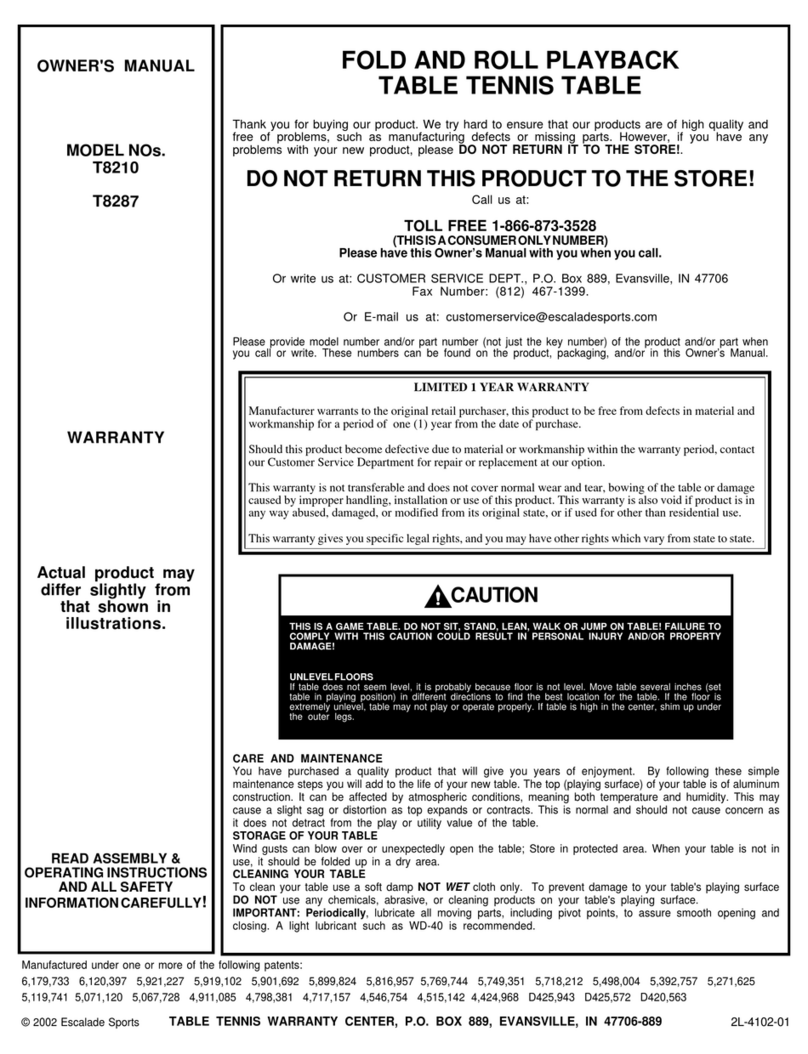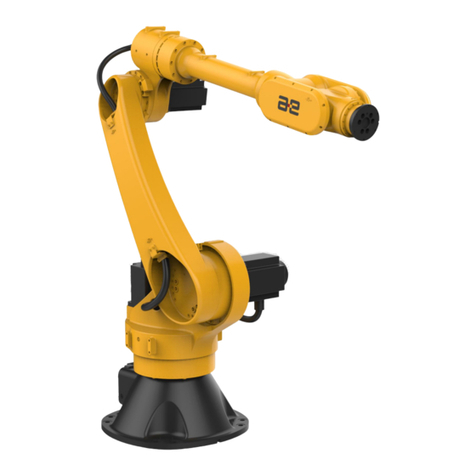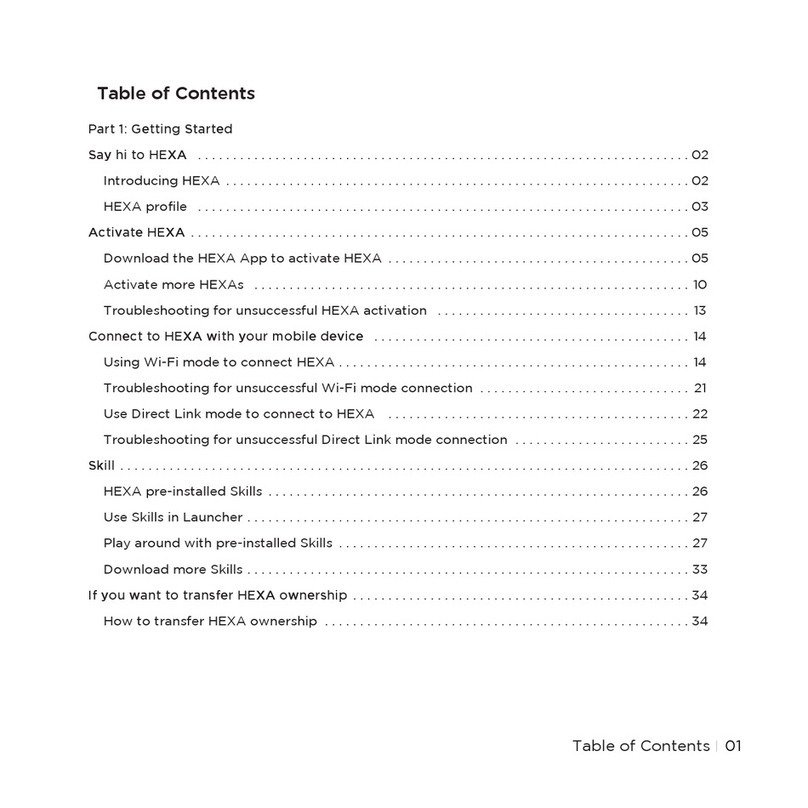BPG werks REV060413 Owner's manual

Always wear a helmet, it could save your life!
Never allow any child under the age of 16 to operate a DTV
Read this manual thoroughly!
It contains important safety information.
SHREDDER
OWNER’S/OPERATOR’S
MANUAL
Original Instructions
REV060413

This manual is based on the latest product information available at the time of publication. BPG Werks has a policy of continually improving its
products. Due to improvements, or other changes, there may be some discrepancies. We reserve the right to make product changes at any time,
without notice and without incurring any obligation to make the same or similar changes to vehicles previously built or sold.
BPG Werks is concerned about the environment and believes in conserving and protecting all natural resources. For this reason , owners should
recycle, trade in, or dispose as appropriate, batteries, oil and tracks.
Congratulations on your purchase of the BPG Werks DTV Shredder. This Owner’s/Operator’s manual will provide you information regarding safe
operation, operational instructions, maintenance and care. Fully understanding this manual and following all of the instructions herein will provide
the knowledge needed to have safe and enjoyable DTV operation.
For questions regarding operation and maintenance for this DTV, Please email [email protected] or call 480-718-8066
This DTV is intended for use by operators age 16 or older. Never allow a child to operate this DTV who is under age 16 .
See dealer for instructions and demonstration of proper riding technique.
THIS DTV IS NOT A TOY AND COULD BE HAZARDOUS TO OPERATE. A DTV handles differently from other vehicles including motorcycles, ATV’s and
cars. A collision or rollover can occur quickly, even during routine maneuvers such as turning, driving on hills and over obstacles.
Reading the Owner’s/ Operator’s Manual
It is important this manual is read from cover to cover carefully by the DTV owner and all operators. Never allow anyone to operate the DTV without
rst reading and understanding the Owner’s/Operator’s manual.
This Owner’s/ Operator’s manual should be a permanent part of the DTV and should remain with the vehicle at all times. The manual should also
remain with the vehicle if sold.
To the Owner
Safety - Notice
Notice

To emphasize special important information in the manual, please note the following :
To emphasize important safety information, the word WARNING, with the alert symbol, has special meaning.:
To emphasize important information, the word CAUTION has special meaning.:
To emphasize important information, the word NOTE has special meaning.:
This is the alert symbol. The symbol means ATTENTION!, BECOME ALERT!,
YOUR SAFETY IS INVOLVED.
!WARNING Indicates a potential hazard that could result in SEVERE INJURY or DEATH to the operator,
bystander or person inspecting or repairing the DTV.
!
CAUTION: Indicates special precautions that must be taken to avoid damage to the DTV.
NOTE: Indicates key information to make procedures easier or clearer to understand.
!WARNING
The rst part will identify a POTENTIAL HAZARD.
The second part will describe WHAT COULD HAPPEN if the warning or caution is
ignored.
The third part will describe HOW TO AVOID THE HAZARD.
CAUTION
or

WARNING LABEL LOCATIONS................ 1
WARNING LABELS................. 2
SAFETY .............................................. 4
DESCRIPTION AND PART FUNCTIONS.. 5
RIGHT HAND BRAKE LEVER...............5
THUMB THROTTLE LEVER.................. 5
ENGINE KILL SWITCH LANYARD........ 5
HANDLE LOCK RELEASE LEVER......... 5
FUEL TANK CAP.................................5
PULL START CORD............................ 5
CHOKE LEVER.................................. 5
FUEL PETCOCK................................ 6
DECK............................................... 6
FUEL AND OIL...................................... 7
FUEL................................................ 7
ENGINE OIL...................................... 7
BATTERY.............................................. 8
BREAK IN............................................. 9
PRE RIDE INSPECTION.......................... 10
RIDING ATV...........................................11
WARNINGS....................................... 11
HELMET, EYE PROTECTION AND
PROTECTIVE CLOTHING.................... 12
STARTING THE ENGINE.................... 13
STARTING OFF.................................. 14
TURNING.......................................... 15
BRAKES.......................................... 29
BRAKE FLUID ...................... 29
VALVE CLEARANCE........................... 29
CHAIN.............................................. 30
INSPECTION............................. 30
TENSION AND ADJUSTMENT......30
CLEANING AND LUBRICATION... 30
TRACKS.............................................31
TRACK TENSION....................... 31
TRACK CLEANING/
LUBRICATING.......................... 31
TRACK REPLACEMENT.............. 32
STEERING ADJUSTMENT.................... 33
STEERING RESISTANCE..................... 33
LUBRICATION POINTS........................34
FASTENER TORQUE VALUES...............35
STORAGE............................................. 36
WASHING THE ATV................................ 37
TRANSPORTING................................... 37
TROUBLE SHOOTING............................ 38
SPECIFICATIONS.................................. 39
FRAME AND ENGINE NUMBER
LOCATION............................................ 40
TABLE OF CONTENTS
RIDING ON HILLS............................. 16
CLIMBING A HILL.................. 16
DESCENDING A HILL............. 17
TRAVERSING A HILL............... 17
RIDING OVER OBSTACLES................ 17
SKIDDING OR SLIDING..................... 18
RIDING THROUGH WATER................. 18
RIDING IN COLD WEATHER............... 19
PROPER CLOTHING............... 19
PRE RIDE INSPECTION......... 20
RIDING ON SNOW AND ICE.............. 21
LOAD GUIDELINES................................ 22
AFTER MARKET PARTS..........................22
MAINTENANCE..................................... 23
MAINTENANCE CHART...................... 24
AIR FILTER........................................ 25
SPARK PLUG................................... 26
ENGINE OIL ......................................27
CHECKING............................ 27
CHANGING............................ 27
IDLE SPEED ADJUSTMENT.................28
THROTTLE CABLE ADJUSTMENT.........28
FUEL HOSE INSPECTION.................. 29
BRAKES.......................................... 29
BRAKE FLUID ...................... 29
VALVE CLEARANCE........................... 29

WARNING LABEL LOCATIONS
1
2
3
4
1

1
UNDER
16
BEE R
BEE R
!
Improper DTV use can result in SEVERE INJURY or DEATH
ALWAYS USE
AN APPROVED
HELMET AND
PROTECTIVE
GEAR
NEVER USE
ON PUBLIC
ROADS
NEVER CARRY
PASSENGERS
NEVER USE
WITH DRUGS
OR ALCOHOL
NEVER OPERATE:
ALWAYS:
!
at speeds too fast for your skills or the conditions.
on public roads - a collision can occur with
another vehicle.
with a passenger - passengers affect balance and
steering and increase risk of losing control.
on hills with an incline greater than 30 .
use proper riding techniques to avoid vehicle
overturns on hills and rough terrain and in turns.
avoid paved surfaces - pavement may seriously
affect handling and control.
avoid traversing a hill without advanced skills.
apply parking brake before starting engine.
ensure handle is securely locked before riding. Be
careful not to press handle lock lever while riding
LOCATE AND READ OWNER’S MANUAL.
FOLLOW ALL INSTRUCTIONS AND WARNINGS
Long hair or loose clothing can get caught in
moving parts below the deck. Restrain hair at or
above shoulder length.
Restrained hair must not interfere with the proper
fit of the helmet.
Securely restrain anything loose that reaches
below the deck.
Guards are supplementary safety devices.
The restraint of hair and clothing is the primary
means of avoiding Entanglement, Death or Injury.
Operating the DTV if you are under the age of 16
increases your chance of severe injury or death.
Never operate this DTV if you are under the age of
16
! Lithium Battery Warning!
Compact Lithium-Polymer battery stored inside
front handle cover.
The safety items listed below must be followed
otherwise battery may catch fire, explode, or leak,
and battery performance and life WILL be
compromised:
With battery installed:
Always follow local or international regulations for
safe transportation of Lithium Batteries
Never pierce the handle cover near the battery or
its leads.
Do not immerse the DTV in water or seawater.
Do not park the DTV in strong direct sunlight in
extremely hot weather
Never operate the DTV outside the range of -20C to
+55C.
Never store the DTV in temperatures less than -5C
or greater than +35C.
Never store the DTV in conditions greater than 75%
relative humidity.
See Owner's Manual for more battery care
instructions.
SAFETY WARNINGS
Jumping the DTV could cause loss off control
and result in severe injury or death.
Jumping can also cause damage to the DTV.
Never perform jumping maneuvers on the DTV,
or drop it from any height.
UNDER
16
BEE R
BEE R
!
Improper DTV use can result in SEVERE INJURY or DEATH
ALWAYS USE
AN APPROVED
HELMET AND
PROTECTIVE
GEAR
NEVER USE
ON PUBLIC
ROADS
NEVER CARRY
PASSENGERS
NEVER USE
WITH DRUGS
OR ALCOHOL
NEVER OPERATE:
ALWAYS:
!
at speeds too fast for your skills or the conditions.
on public roads - a collision can occur with
another vehicle.
with a passenger - passengers affect balance and
steering and increase risk of losing control.
on hills with an incline greater than 30 .
use proper riding techniques to avoid vehicle
overturns on hills and rough terrain and in turns.
avoid paved surfaces - pavement may seriously
affect handling and control.
avoid traversing a hill without advanced skills.
apply parking brake before starting engine.
ensure handle is securely locked before riding. Be
careful not to press handle lock lever while riding
LOCATE AND READ OWNER’S MANUAL.
FOLLOW ALL INSTRUCTIONS AND WARNINGS
Long hair or loose clothing can get caught in
moving parts below the deck. Restrain hair at or
above shoulder length.
Restrained hair must not interfere with the proper
fit of the helmet.
Securely restrain anything loose that reaches
below the deck.
Guards are supplementary safety devices.
The restraint of hair and clothing is the primary
means of avoiding Entanglement, Death or Injury.
Operating the DTV if you are under the age of 16
increases your chance of severe injury or death.
Never operate this DTV if you are under the age of
16
! Lithium Battery Warning!
Compact Lithium-Polymer battery stored inside
front handle cover.
The safety items listed below must be followed
otherwise battery may catch fire, explode, or leak,
and battery performance and life WILL be
compromised:
With battery installed:
Always follow local or international regulations for
safe transportation of Lithium Batteries
Never pierce the handle cover near the battery or
its leads.
Do not immerse the DTV in water or seawater.
Do not park the DTV in strong direct sunlight in
extremely hot weather
Never operate the DTV outside the range of -20C to
+55C.
Never store the DTV in temperatures less than -5C
or greater than +35C.
Never store the DTV in conditions greater than 75%
relative humidity.
See Owner's Manual for more battery care
instructions.
SAFETY WARNINGS
Jumping the DTV could cause loss off control
and result in severe injury or death.
Jumping can also cause damage to the DTV.
Never perform jumping maneuvers on the DTV,
or drop it from any height.
2

WARNING LABELS
!
Use caution when applying brakes. Avoid using
brakes at high speeds. Sudden braking may result
in a rollover and personal injury. Always attempt to
decrease speed by gradually letting off the throttle
first. Sudden release of the throttle may also result
in a rollover. Smooth throttle control is paramount
to maintaining control of the vehicle.
Never operate this DTV at night or in low light
conditions.
OPERATION WARNINGS
WARNING
!
Never touch engine or
exhaust after running engine
until they have cooled.
WARNING
!
Keep hands, fingers, feet
away from sprockets, chains,
rollers and track.
2
3
4
3

Always keep both hands on the handlebars
and both feet on the Deck, doing so will
help the operator be ready for unexpected
situations.
Always follow the proper turning
procedures listed in this manual. Practice
turning at slow speeds before attempting
to turn at faster speeds.
Always apply parking brake before starting
engine.
Always insure the handle is securely
locked before riding. Be careful not to
press handle lock while riding.
Always use caution when applying brakes.
Avoid using brakes at high speeds. Sudden
braking may result in a rollover and
personal injury. Always attempt to
decrease speed by gradually letting off the
throttle rst. Sudden release of the throttle
may also result in a rollover. Smooth
throttle control is paramount to
maintaining control of vehicle.
Never allow anyone under the age of 16 to
operate this DTV.
Always wear an approved helmet.
Approved helmets in the USA and Canada
bear a U.S. Department of Transportation
(DOT) label. Approved helmets in Europe,
Asia and Oceania bear the ECE 22.05
label.
Always wear over the ankle boots, eye
protection, gloves, long sleeve shirt , long
pants, elbow, shin and knee pads while
operating this DTV.
Never allow a passenger on this DTV. This
DTV is designed for one operator and no
passengers.
Never operate this DTV on paved surfaces
and/or public roads. Pavement may
cause the DTV to become unstable.
Always go slowly and pay attention to
unfamiliar terrain. Be alert to changing
terrain conditions when operating the DTV.
SAFETY
Never take drugs or alcohol before or
during operating this DTV.
Never traverse, climb or go down a hill that
has over a 30° maximum incline. Avoid
hills with loose or slippery terrain.
Never attempt to traverse a hill until you
feel comfortable enough with your riding
skill level.
Always follow proper procedures on hills.
Follow the instructions in this manual for
traversing , climbing or going down hills.
Follow the proper instructions located in
this manual if DTV is stalled on a hill.
Never attempt wheelies, jumps or any
other type of stunts on this DTV.
Do not drop DTV from any height.
Always follow the pre-ride inspection
procedures and maintenance procedures
located in this manual before use.
Always go slow on terrain that is not
familiar, be alert, an obstacle could come
up unexpectedly.
4

DESCRIPTION AND PART FUNCTIONS
Brake Lever: Brakes are applied when the
brake lever is pulled toward the hand grip.
Thumb throttle lever: Throttle is
applied by depressing the Thumb Throttle.
Engine Kill Switch Lanyard: The engine
will not start and will stall if running, when
the Kill Switch Lanyard is removed from
the DTV.
Note: Always wear the Lanyard Strap
around wrist while operating DTV
Choke Lever: If the engine is cold, the
choke can help start the engine by pulling
out the choke lever to the “ON” position.
Once engine has warmed up , push in the
choke lever to the “OFF” position.
Pull Start Cord: To start the engine, Pull
the Pull Start Cord.
Note: Make sure the Engine Kill Switch
Lanyard is attached before attempting
to start the engine. Engine will not run
without the Engine Kill Switch Lanyard
attached.
Handle Lock Release Lever: Handle can
be adjusted when the Handle Lock
Release Lever is pulled toward the hand
grip.
Fuel Tank Cap: To open the fuel tank
cap, turn the cap counter clockwise to
remove. To re-install the cap, turn the
cap clockwise until snug. Make sure the
cap is seated properly . Choke
Pull Start Cord
Thumb Throttle
Engine Kill
Switch Lanyard Brake Lever
Handle Lock
Release lever
Fuel Tank Cap
5

Fuel Petcock: The Fuel Petcock has 3
positions: “OFF”, “ON”, “RESERVE”
Position Locations:
“ON” - 6 oclock
“OFF” - 9 oclock
“RESERVE” - 12 oclock
“OFF” position: Fuel will not ow to the
carburetor in this position. Always turn
the fuel petcock to the “OFF” position
when unit is not in use or is being
transported.
DESCRIPTION AND PART FUNCTIONS
Fuel Petcock
Deck: The deck provides steering of the
DTV by shifting body weight left or right
Deck
“ON” position: This is the normal
operating position. The “ON” position
allows fuel to ow from the Fuel Petcock to
the carburetor. Turn the Fuel Petcock to
the”ON” position when ready to start and
ride your DTV.
“RESERVE” position: If engine runs out
of fuel when Fuel Petcock is placed in the
“ON” position, place fuel Petcock to the
“RESERVE” position. Re-fuel as soon as
possible. Once re-fueled, make sure to
place the Fuel Petcock back to the “ON”
position.
NOTE:
ONLY use “RESERVE” if and when the
DTV runs out of fuel. Make sure to switch
back to “ON” after refueling. Running for
extended periods of time on “RESERVE”
can lead to fuel line blockages.
6

FUEL AND OIL
FUEL
Never use leaded gasoline in this product.
It could affect the engine’s emissions and
damage the engine. This DTV requires
clean unleaded regular gasoline.
Use premium high-octane fuel due to the
high compression ratio. Use 91 on the AKI
scale (USA) or 95 on the RON scale (rest
of world).
Gasoline/ Ethanol blends
A blend of unleaded gasoline with
Ethanol, also known as GASOHOL, at or
below 10% (E10 ) can be used in your DTV.
Ethanol greater than 10% can damage
your engine and will void your warranty.
Gasoline/Methanol Blends
A blend of gasoline with Methanol of 5%
or less can be used in your DTV. Do not
use gasoline, under any circumstances,
containing more than 5% Methanol, doing
so will damage your engine and will void
the warranty.
ENGINE OIL
The recommended oil for this DTV is
5W-30 Full synthetic oil.
Full synthetic oil is necessary for engine
life due to the high rotation speeds of the
engine.
Quantity of oil - 600 ml (.63 qt.)
Overlling the fuel tank can cause
the fuel to expand which can cause
overow due to the heat from the
engine or sun.
Spilled fuel can catch re.
Always ll the fuel tank with the
handle in the horizontal (at)
position. Never ll the fuel tank
above the bottom edge of the ller
neck.
!WARNING
Fuel and fuel vapor are highly
ammable and toxic. You can be
burned or poisoned while refueling.
Before refueling make sure to
follow the procedures listed:
1 Shut off engine, Make sure
there are no ames, sparks or
heat sources close by.
2 Refuel only outdoors in a well
ventilated area.
3 Do not smoke while refueling.
4 Wipe up any spills immediately.
5 Avoid breathing any fuel vapors.
6 Keep children and pets away.
!WARNING
Fuel Filling Fuel Cap
Before fueling, place the DTV Handle in the
Horizontal (at) position. Fill the DTV with
fuel up to the bottom of the ller neck.
Handle in
at position
7

BATTERY
The battery can catch re, explode or leak
if the safety items listed below are not
followed:
• Do not immerse the battery in water
or seawater. Keep the battery in a
cool dry environment during storage.
• Do not mix the battery with a
different type (such as dry battery ) or
a battery with different performance
characteristics altogether.
• Keep all batteries out of the reach
of children. Consult a doctor
immediately if battery or electrolyte
is swallowed.
• Do not use or leave the battery near a
heat source such as a re or heater.
• When re-charging, use the battery
charger specically for that purpose.
• Do not reverse the positive (+) and
negative (-) terminals.
• Do not connect the battery to an
electrical outlet.
• Do not dispose the battery in re or
heat.
• Do not short-circuit the battery by
directly connecting the positive (+)
and negative (-) terminals with metal
objects such as wire.
• Do not transport or store the battery
together with metal objects such as
necklaces, hairpins etc.
• Do not strike or throw the battery
against a hard surface.
• Do not directly solder the battery
• Do not pierce the battery with a nail
or sharp object.
• Never disassemble the battery in any
way.
!WARNING
• Do not use or leave the battery at a
very high temperature (for example,
in strong direct sunlight or in a vehicle
in extremely hot weather). Otherwise
the battery can overheat catching re
or its performance will degenerate
and its service life will be shortened.
• Do not use in a location where static
electricity is prevalent, otherwise
the safety devices may be damaged,
causing a harmful situation.
• If electrolyte gets into eyes due to
leakage of battery, do not rub the
eyes! Rinse eyes with clean running
water, and seek medical attention
immediately . Otherwise it may injure
eyes or cause loss of sight.
• If the battery gives off an odor,
generates heat, becomes discolored
or deformed, or in any way appears
abnormal during use, recharging or
storage, immediately remove it from
the device or battery charger and
place it in a contained vessel such as
a metal box.
• If battery terminals are
contaminated, clean the terminals
with a dry cloth. Otherwise power
failure or charge failure may occur
due to poor connection between the
battery and the electronic circuitry.
• Be aware, discarded batteries may
cause re. 100% discharge the
battery and tape the battery
terminals to insulate them before
disposal.
CAUTION
Battery Type: 12V Li-Po
Operating temperature range: -20C to +55C
Storage conditions: -5C to +35C, and less
than 75% relative humidity
8

BREAK - IN
The initial 5 hours of operation is most
important in the life of your DTV. Proper
operation during this break in period will
help assure maximum life of your DTV
engine.
The following guidelines will explain the
proper break in procedures.
1. During the rst 5 hours of operation,
do not apply more than 1/2 throttle.
2. During the next 5 hours of
operation do not apply more the 3/4
throttle
Vary the engine speed
Make sure to vary the engine speed
during the break in period, this allows the
engine to load and unload which helps the
parts to seat properly. It is essential to
place some stress on the engine during the
break in process, however, too much
Break in period
Allow oil to circulate before
riding
Allow the DTV engine to warm up before
riding. This allows the oil to circulate
throughout the engine which lubricates
the components.
Observe your initial and most
critical maintenance service
The initial service( break in maintenance )
is the most important service for your DTV.
During the break-in time frame, all of the
engine components will have mated
together and seated. Maintenance
required as part of the initial service
includes correction of all adjustments,
tightening of all fasteners and
replacement of dirty oil. Timely
performance of this maintenance will help
make sure your DTV will have the best
service life and performance of the engine.
stress could cause damage to the engine
components. Be careful not to load the
engine too much.
9

Performing maintenance and
checks while the engine is running
could be hazardous.
You could be severely injured by
moving parts or hot surfaces.
Never perform maintenance or
check procedures while the engine
is running with the exception of
checking the engine stop switch or
throttle.
!WARNING
Failing to inspect and maintain
your DTV could be hazardous.
Not following the pre-ride
inspection procedures could result
in loosing control of the DTV
resulting in an accident or damage
to the DTV
Always perform a Pre-ride
inspection before each ride.
PRE-RIDE INSPECTION
!WARNING
Inspecting and checking the condition
of the DTV before each ride is important.
Following the pre-ride check list will help
insure the you do not have mechanical
problems which could result in injury or
becoming stranded. Make sure the DTV
is in good operating condition before each
ride.
WHAT TO
CHECK
CHECK FOR
Steering • Smoothness
• No restriction of
• movement
Brakes • Brake pad wear.
• Proper brake lever play
Tracks • Check for exposed and
frayed reinforcement
threads as well as
cracks
Fuel Tank • Enough fuel for the ride
• Fuel cap secure
• Hoses have no signs of
cracks or leaks
Thumb
Throttle
• Thumb Throttle snaps
back to idle when
released
• Operates freely
• Has correct free play
Engine
Stop
Switch
• Switch shuts off engine
when activated.
Engine
Oil
• Correct oil level
Drive
Chain
• Proper tension
• Lubricated
• No excessive wear or
damage
General
Condition
• All nuts and bolts tight
• No rattles from engine
or frame while running
10

Riding this DTV on paved surfaces could
be hazardous.
Riding on paved surfaces , including
parking lots, sidewalks, driveways and
streets can cause loss of control resulting
in severe injury or death. DTV Tracks are
designed for off-road use only, paved
surfaces adversely affect handling and
control.
Avoid riding DTV on paved surfaces. If you
must cross a paved surface, go slow and
do not make sudden turns or stops.
!WARNING
Carrying a passenger on this DTV could be
hazardous
Carrying a passenger could cause loss of
control resulting in severe injury of death
to the operator and/or the passenger.
This DTV is designed for one operator and
no passengers. Never allow a passenger.
!WARNING
Riding this DTV on any public road or
highway could be hazardous.
You could collide with another vehicle
if you ride on public roads or highways
resulting in severe injury or death.
Never ride on public roads and highways.
!WARNING
Operating this DTV in a irresponsible
manner which includes jumping, doing
wheelies or other stunts could be
hazardous.
Jumping, doing wheelies or other stunts
could result in loss of control of the
DTV resulting in severe injury or death.
Never attempt stunts, such as jumping or
doing wheelies.
!WARNING
RIDING THE DTV
11

1
2
3
4
5
6
RIDING THE DTV
HELMET, EYE PROTECTION,
PROTECTIVE CLOTHING
Helmet
Wearing a helmet (1) can prevent a severe
head injury. Whenever riding a DTV
always wear a helmet that meets or
exceeds established safety standards.
Approved helmets in the USA and Canada
bear a U.S. Department of
Transportation (DOT) label. Approved
helmets in Europe, Asia and Oceania
bear the ECE 22.05 label. The ECE mark
consists of a circle surrounding the letter
E, followed by the distinguishing number
of the country which has granted approval.
The approval number and serial number
will also be displayed on the label.
Always wear shatter prof eye protection
when riding a DTV such as a face shield or
goggles (2). While riding a DTV you can
be hit in the eyes by any of the following:
dust, branches, rocks, debris from other
riders, bugs, etc. Good eye protection as
well as a helmet and protective riding gear
should be mandatory when riding a DTV.
Riding a DTV without a helmet, eye
protection, and protective clothing can be
hazardous
Riding a DTV without a helmet increases
the chance of severe head injury or death
in the event of an accident.
Riding a DTV without eye protection such
as a face shield or goggles could result in
severe injury in the event of an accident.
Riding a DTV without protective clothing;
over the ankle boots, long pants, gloves,
long sleeve shirt, elbow and knee pads
could result in severe injury in the event of
an accident.
Always wear a Helmet, eye protection, long
pants, long sleeve shirt, over the ankle
boots, gloves, elbow and knee pads when
riding a DTV
!WARNING
8
Wear protective clothing: Long sleeve shirt
(3), Gloves (4), Long pants (5), over the
ankle boots (6), shin pads (7), elbow and
knee pads(8).
Riding an DTV exposes the rider to many
hazards, wearing protective clothing can
help protect the rider from injury.
7
12

STARTING ENGINE
To start the engine
1. Set the parking brake.
2. Make sure the Engine Stop Switch
Lanyard is attached before attempting to
start
3. Place the Fuel Petcock to the “ON”
position
4. If engine is cold, place the choke lever
to the “ON” position (pulled out).
Note: If the engine is already warm the
choke may not be needed.
5. Pull the Pull Start Cord
6. Once engine has warmed up for a few
minutes, place the choke to the “OFF”
position (pushed in).
Starting or running the DTV in an
enclosed area such as a garage or
shed where there is no ventilation
is hazardous
Inhaling exhaust fumes from the
DTV can cause severe injury or
death
Never start or run the DTV in an
enclosed environment where there
is no ventilation. Always start and
run outdoors.
!WARNING
RIDING THE DTV
Engine Stop Switch Lanyard
Choke
Pull Start Cord
Fuel Petcock
Parking Brake
13

Operating this DTV at excessive speeds
could be hazardous.
Riding at excessive speeds increases your
chances of losing control of the DTV, which
could result in severe injury or death.
Always go at a speed that is proper for the
terrain, visibility, operating conditions,
operator skill, and operator experience.
Always know the terrain before riding.
!WARNING
Removing hands from the handlebars
and/or feet from the Deck while
operating the DTV could be hazardous.
Removing both or one hand from the
handlebars and/or feet from the Deck
could result in loss of control of the DTV
resulting in severe injury or death.
Always ride with both hands on the
handlebars and both feet on the Deck
while operating the DTV.
!WARNING
STARTING OFF
1. Allow the engine to warm up approximately
3 minutes before starting off.
2. Release the parking brake.
3. Gradually give the DTV throttle.
Depressing the thumb throttle to full
throttle when starting off could be
hazardous.
The DTV could lurch forward causing the
DTV to Flip backwards causing loss of
control.
Always open the throttle gradually when
taking off from a stopped position.
!WARNING
RIDING THE DTV
14

TURNING
DTVs are different than many other types
of vehicles in that turning is controlled by
the weight of the rider shifting right or left.
FOR HIGHER SPEEDS OR SHARPER TURNS
Depending on the speed going into a turn,
the rider will need to adjust body weight
accordingly. For faster speeds the rider
will need to shift more body weight to the
inside of the turn. The important factor in
turning is doing so under control. Make
sure the capabilities of the rider can match
the maneuver. Practice turning on a
obstacle free dirt surface.
Steps for proper turning: Practice these
steps on a at, level, obstacle free surface.
1. Let off the throttle to slow down before
a turn. The vehicle decelerates very quickly
on its own due to the resistance of the
tracks. Use brakes if necessary.
Decelerating during a turn can easily
cause a loss of balance and control, so
make sure to slow down prior to turning .
2. Once slow enough to make the turn,
move body weight to the inside of the turn.
3. Look into the direction of the turn while
shifting weight to the inside of the turn.
4. Once turned in the proper direction
shift body weight back to the center of the
Deck.
Improper turning techniques could be
hazardous
The DTV could roll over or the rider could
be thrown from the DTV which could lead
to severe injury or death.
Follow the turning steps listed in this
owner’s manual, practice turning at slow
speeds on a at obstacle free dirt surface.
!WARNING
Braking while turning could be hazardous.
Braking while turning could cause the DTV
to roll over or slide into an object
which could result in severe injury or
death.
Before making a turn, slow down and
release the brake.
!WARNING
RIDING THE DTV
15

Riding a DTV on hills could be hazardous
Riding a DTV on a hill could result in
rolling over while traversing, ipping over
backwards while climbing, ipping over
while descending, general loss of control
of the DTV. Any of these accidents on a
hill could result in severe injury of death.
Never operate a DTV on steep hills, never
operate a DTV on any hill that is above the
riders ability to do so. Practice riding the
DTV on small hills using the hill riding
techniques listed in this owner’s manual.
!WARNING
RIDING ON HILLS
Climbing a hill
1. Stop and evaluate the hill before
attempting to climb. Make sure the hill is
not too steep, the terrain is not loose or
slippery and that there are no obstacles.
2. Approach the hill at a steady speed
and maintain speed throughout the climb.
3. Shift body weight forward during the
climb.
4. Adjust the angle of the handle forward
using the handle lock release lever
(page 5).
5. When approaching the top of the hill,
slow down.
If it is determined that the DTV will
not make it to the top of the hill:
1. Do not try to turn the DTV around while
riding and come back down, this could
cause the DTV to roll over. Instead, once
the DTV has stopped, dismount the DTV
while applying the brake
RIDING THE DTV
2. Stand beside or behind the DTV, lower
the handle enough to reach the hand
controls, keep one hand ready to apply the
brakes and use the throttle gently to drive
forward.
16
This manual suits for next models
1
Table of contents
